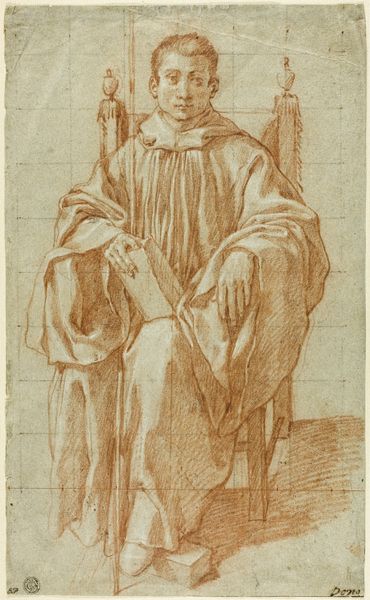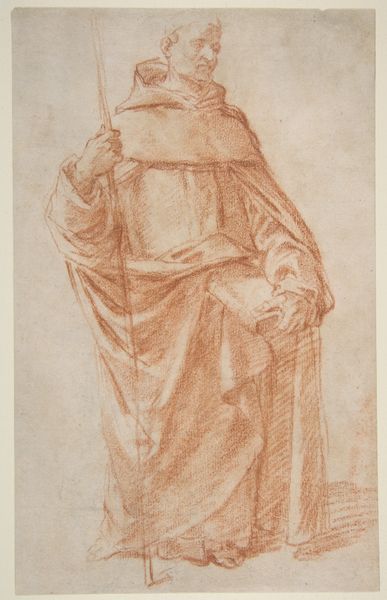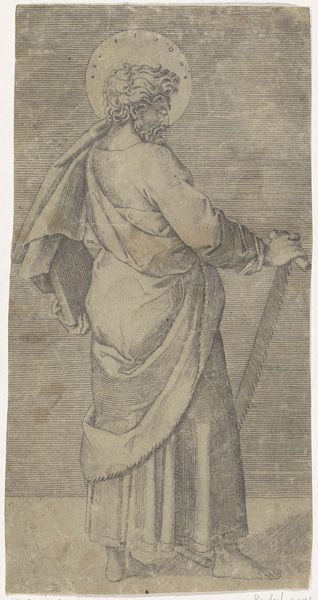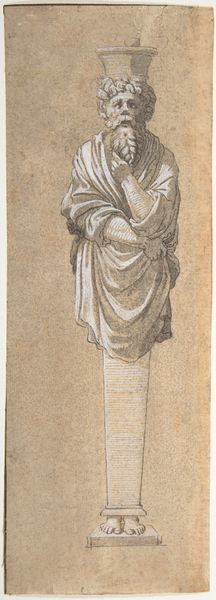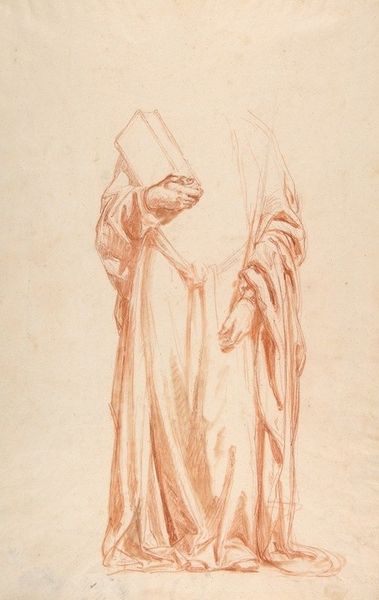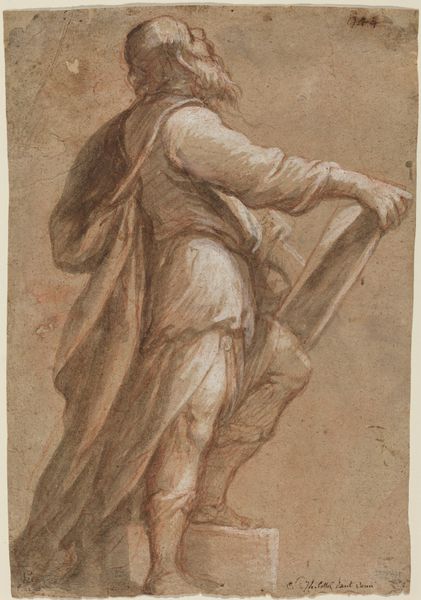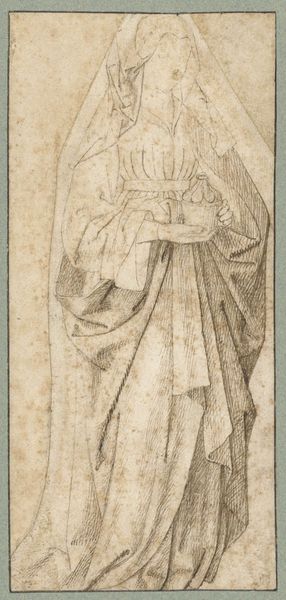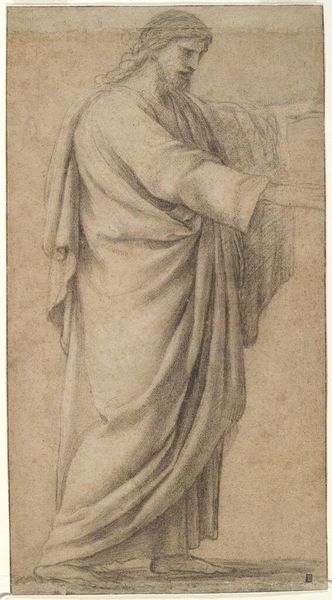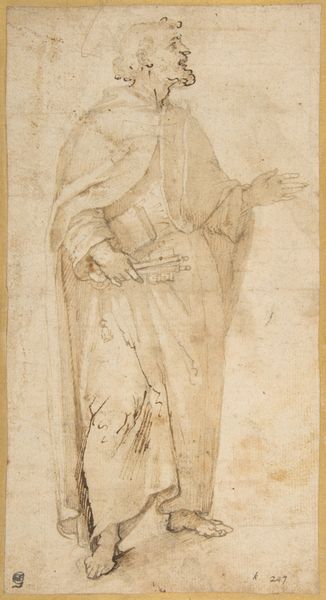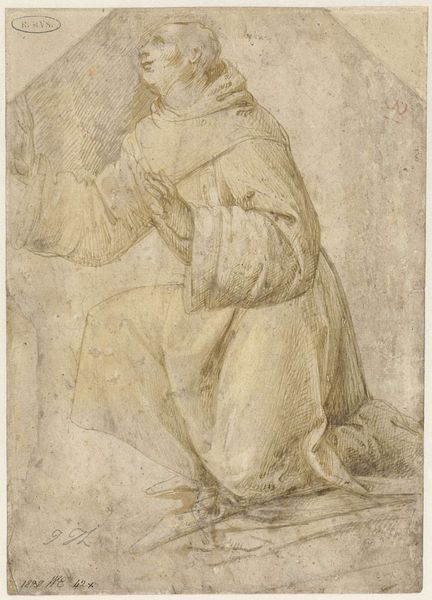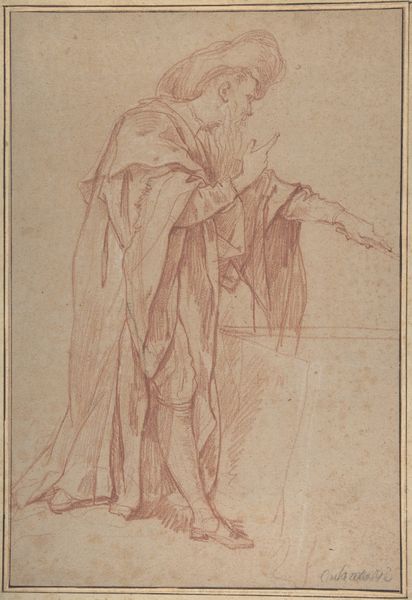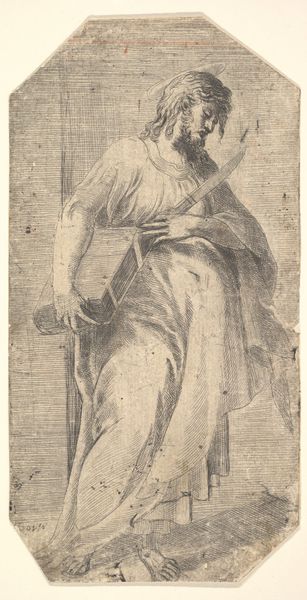
drawing, pencil
#
portrait
#
drawing
#
charcoal drawing
#
mannerism
#
figuration
#
pencil drawing
#
pencil
Dimensions: height 274 mm, width 197 mm
Copyright: Rijks Museum: Open Domain
Curator: Welcome! Today we’re looking at "Studie van een gedrapeerde figuur," or "Study of a Draped Figure," a drawing attributed to Matteo Rosselli, dating somewhere between 1588 and 1650. Editor: The figure almost fades into the paper, like a ghost of rust-colored earth. I’m immediately drawn to the way the drapery clings, falls—it feels both weighty and ethereal. Curator: Absolutely, and let's consider the materiality. The reddish-brown hue comes from the use of a red chalk, which was incredibly popular for figure studies at the time. It allowed artists to achieve subtle gradations in tone and a certain warmth that you don't quite get with graphite or charcoal. Editor: It's interesting to consider the sheer volume of fabric represented here with what I understand to be simple strokes of chalk. The pleats are almost liquid, bending and curving under what must have been heavy wool, linen, or whatever was available. It really pushes back at the digital rendering, emphasizing handmade quality. Curator: This kind of drapery study was crucial to an artist's training in this period, and served as a way of experimenting with rendering light and shadow, weight and volume. We see those classical elements referenced heavily here, and these skills directly contributed to larger compositional paintings that many artists produced to display these newfound understandings. Editor: When I look closely, I can practically feel the texture of the paper. There are those tiny imperfections where the chalk skips, isn't it fascinating how a study meant as preparation in effect has so much standalone weight? The pose seems staged, a very specific angle—someone deliberately posed for an extended duration. One has to think of all the unseen studio labor baked into these studies. Curator: Indeed! You touch upon such important context—the production circumstances. To stand or sit as a model, for hours on end... We so easily forget how much artistic practice relied on human endurance. It is true, though, isn’t it? I think of this drawing as more than just practice. It breathes and lives as its own creation. Editor: Right. To move back into making, you really feel the energy of the artist practicing in a workshop, studio, surrounded by all other elements involved in artmaking... One feels invited to consider those material and social networks behind all those drawings we still look at. Curator: Reflecting on the tangible, tactile aspect truly deepens the appreciation. Thanks! Editor: Agreed! It’s fascinating how grounding this analysis in material practice has altered my understanding, almost changing how I view the piece entirely!
Comments
No comments
Be the first to comment and join the conversation on the ultimate creative platform.
